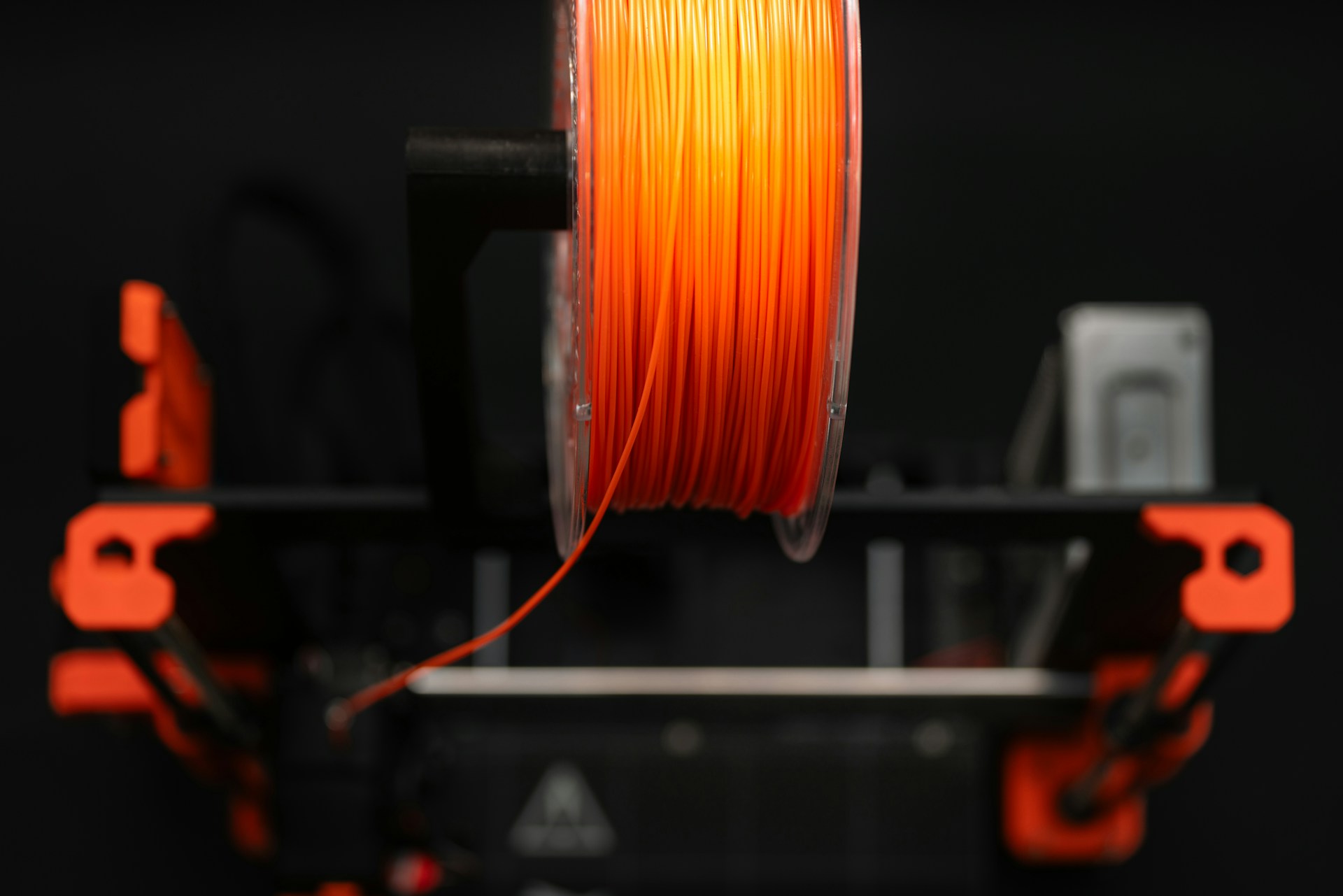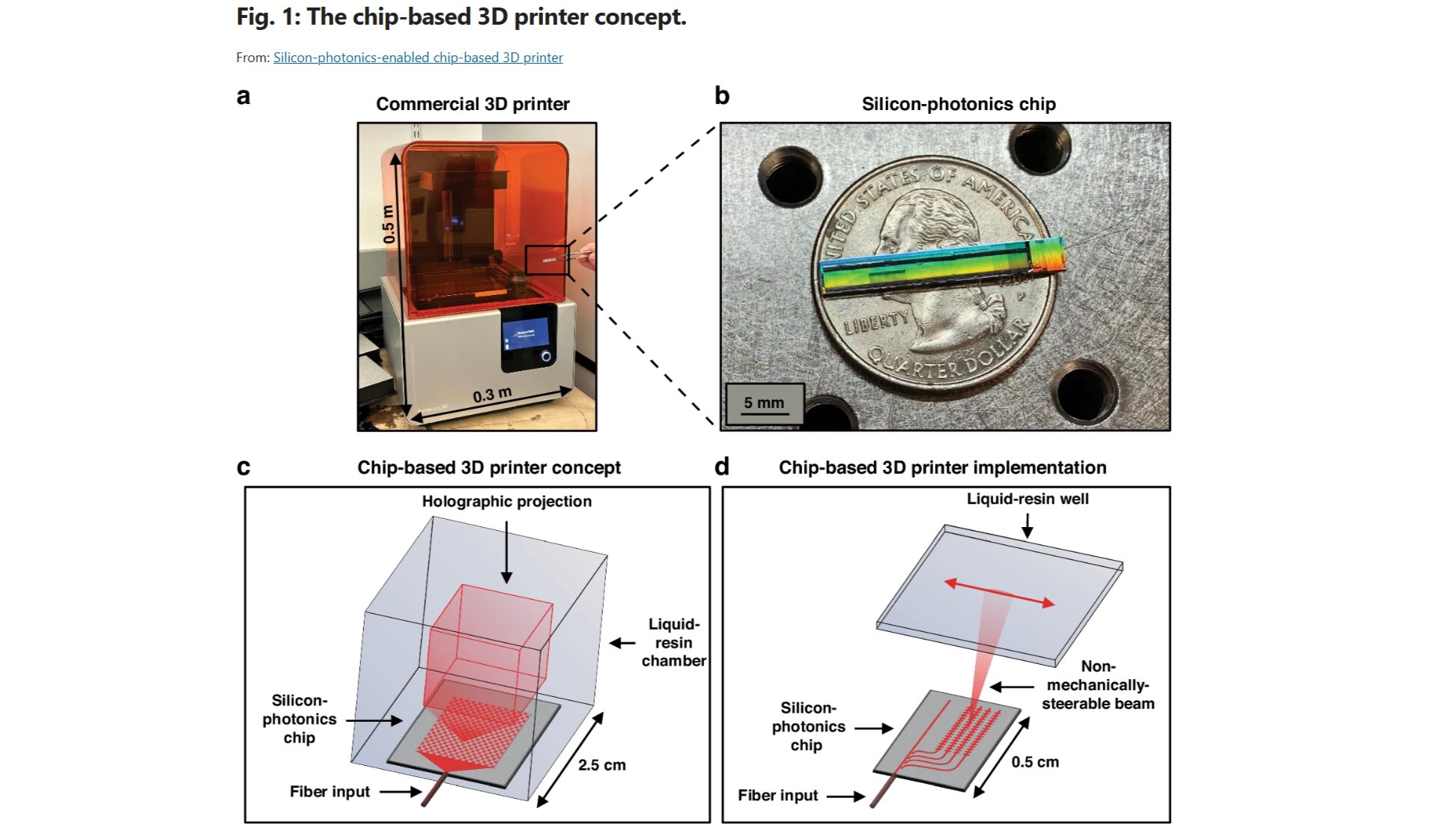



What could a person make with a three-dimensional printer that fits in the palm of their hand? Is there any point to building a miniature version of perfectly good technology? The only way to answer these questions is to take a look at the smallest 3D printer in the world.
As far as we know, the smallest 3D printer in the world is the 0.67-inch stereolithography (SLA) machine from YouTuber My N Mi, a hobbyist who uploads “technical experiments.” To say it is palm-sized is an understatement—it is as tall as a match and as wide as a micro SD card.
It is 18 x 31 x 41 millimeters and weighs just over half an ounce. Due to its size, its creator must manually load resin into the chamber via a syringe. A USB to UART converter inside a CP2102 cable plugs into the rear to upload the model data. It is capable of build volumes of up to 11 x 11 x 17 millimeters.
My N Mi has displayed several of their creations on their YouTube channel. In their technical demonstration, they print a miniature metal robot. Their first public print was a micro-scale Benchy. The following models included a dolphin and a cat-like figure with wings and a horn.
Comparably, one of the smallest laser printers in the world—the HP LaserJet Pro M15w—is 13.6 inches long, 7.5 inches wide and 6.3 inches tall. It weighs just over eight pounds. These dimensions do not even come close to My N Mi’s creation. SLA allows engineers to minimize mechanical components.
This hobbyist’s creation is impressive, but impractical. Joe Chen, Jose Li and David Dong—an electronics engineer, mechanical engineer and industrial designer, respectively—developed a more scalable alternative to standard-sized machines. TinyMaker can fit in the palm of a person’s hand. It may not be the smallest 3D printer in the world, but it is close.
This crowdfunded project is meant for at-home use, not commercial applications. Every part snaps together for seamless assembly. It has a digital display and buttons so end users can select the model they want to print. A micro SD card provides the model data.
It is 100 x 115 by 155 millimeters and weighs 600 grams, making it portable. Its built volume is 30.6 x 40.8 x 60 millimeters. The resin tank cover has a leakproof gasket to minimize smells and prevent leaks while in transit. With the optional carrying case, users can easily transport the printer, washing and curing station, resins and brushes.
During operation, the machine consumes just 5 Watts of energy, allowing users to power it with a portable power bank. It works with any 405 nm resin, including water-washable, translucent, ABS-like and castable. Also, it supports Windows, macOS and Linux operating systems. Apart from its versatility, its relatively low price point makes it accessible.
There is some doubt surrounding small-scale 3D printers. Aren’t they pointless? What could the smallest 3D printers in the world accomplish that bigger machines couldn’t? Why would anyone want to print within those restrictions? Frankly, the point is to save time and resources.
Small form factors accelerate print times drastically. Users can achieve a smaller level of detail on a smaller scale in a shorter time frame. This speed provides a competitive edge during prototyping, potentially streamlining research and development.

Power consumption is another major draw. With the national average electricity price increasing by around 22.55% from 2019 to 2024, both hobbyists and businesses are looking for ways to save. Small machines like TinyMaker consume less power than a single incandescent bulb and can run on portable power banks, making them ideal alternatives.
Saving space may not be a priority for those who enjoy their craft and don’t mind clutter, but it is important for commercial applications because manufacturing and warehousing space is limited. Lease rates reached a high of $9.72 per square foot in 2023, up 20.6% from 2022. Saving floor space while maximizing print volume is cost-effective.
Currently, small-scale 3D printing is limited to hobby and personal use cases. People typically get these machines to create tabletop miniatures, desk toys and custom trinkets. However, they could easily break into the commercial space. Manufacturing micro-scale components on demand will become a major market as electronics miniaturization takes off.
Manufacturers could print small replacement parts or microscopic electronics. Pharmaceutical companies could develop microrobotics for targeted drug delivery. Real estate professionals could produce highly detailed miniatures for product design or architecture planning. Whatever the industry, innovation will incentivize broader adoption.
Research is moving quickly in this field. Researchers recently demonstrated the viability of a chip-based 3D printer that iterates upon the conventional SLA technique. Instead of using a laser to cure liquid photopolymer resin layer by layer, a millimeter-sized photonic chip emits reconfigurable visible-light holograms into a fixed resin well.
In plain language, the chip—no bigger than a quarter—sits at the bottom of the well and projects a hologram in the shape of the desired 3D model. This configuration eliminates the need for a laser routing system and a complex mechanical build platform.

Although this SLA-inspired build is only a proof-of-concept, it hints at what the next generation of 3D printing technology will look like. The industry may soon transition from bulky benchtop models to handheld form factors.
While such a leap may seem impossible, it has been done before. A consumer-grade 3D printer cost more than $20,000 in 2010. Almost one decade later, this technology had dropped in price to just $500. The industry’s size enabled market competition, driving costs down. However, many still view this technology as a niche personal hobby or risky commercial investment.
Standard models take up a lot of space and are resource-intensive, which can put people off. Small, cost-effective alternatives eliminate those entry barriers, incentivizing utilization. It could be revolutionary for the industry.
TinyMaker, My N Mi’s creation and the proposed SLA printer may not seem like much, but the smallest 3D printers in the world are the first inventions in the next generation in this field of technology. They demonstrate the first step toward portable, compact, low-cost solutions.


This site uses Akismet to reduce spam. Learn how your comment data is processed.